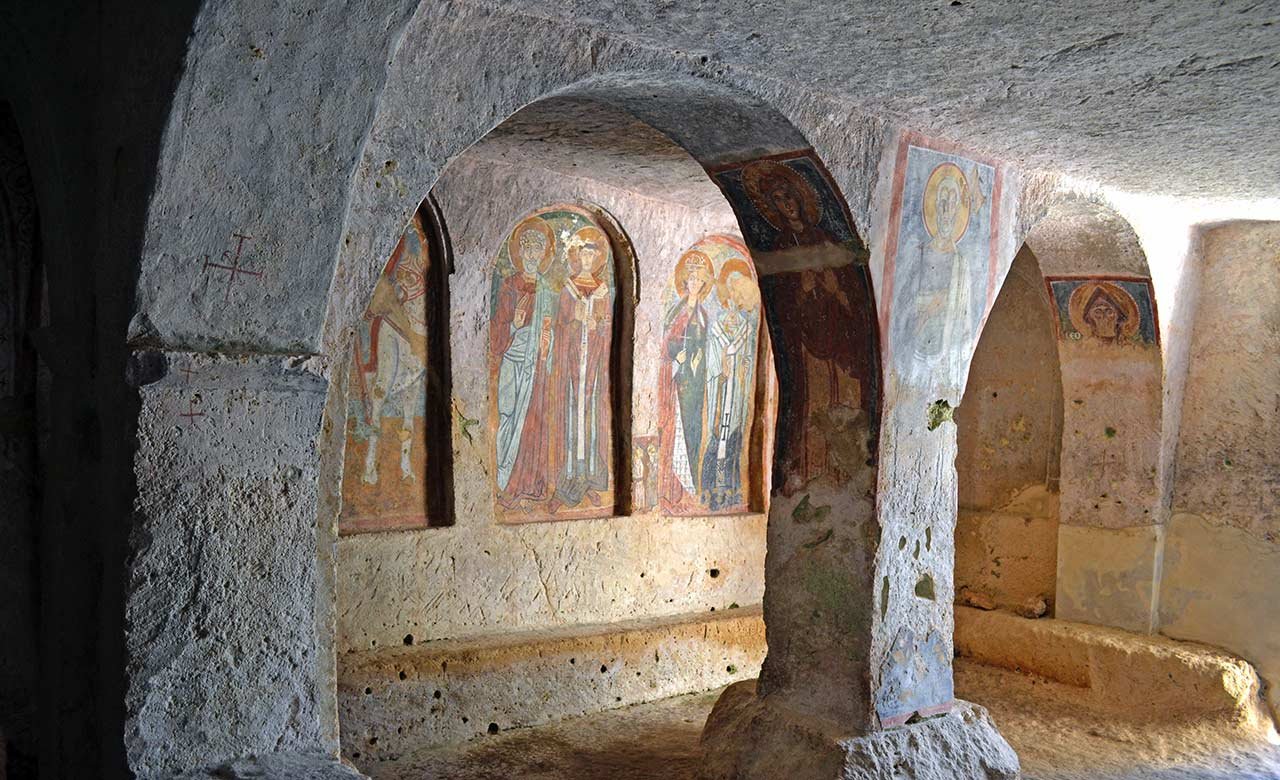The RUPESTRIAN CHURCH OF ST. NICHOLAS, defined as the “Sistine Chapel of the rupestrian civilization”, has the “stratification” of the main expressive themes of the pictorial production of the southern Italy, covering about five centuries of medieval life and art, from the 11th to the 14th centuries, thus representing for this period a small but complete and relieble “art gallery” of religious medieval Apulian art.
Critics and art historians demonstrate that on the stylistic point of view, in these generally popular paintings – in fact, rarely there is a cultured and refined stylistic figure, as in the Deesis or in the St. Paraskeva – the expressive canons of Byzantine spirituality come together from the Balkans, the Cypriot-Palestinian area and in general from the eastern Mediterranean, as well as the cultural influences of the Lombard-Benevento area, of Arab-Norman Sicily and of Benedictine art.
In particular, in the church of St. Nicholas at least three cultural ancestries are evident in the frescoes: one linked to the Byzantine ecumenism (Deesis in its original scheme, i.e. Christ Christ blessing in the center with the Virgin on the right and St. John the Baptist on the left; St. Paraskeva; St. Pélagie; the anonymous Saint with book; the two Virgins with Child); the other linked to the Crusades that sees the spread of the cult of the saints dear to warriors and pilgrims (St. Michael the Archangel; St. George; St. Julian; St. Leonard of Limoges; and probably St. Theodore); the third linked to the purely local devotional sphere (St. Nicholas; St. Lucy; the Parable of the Virgins).
